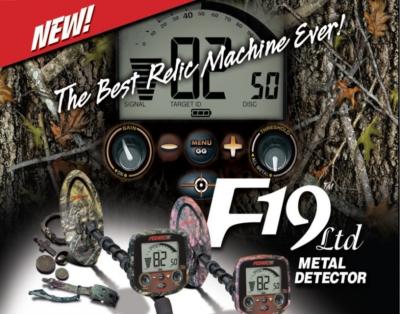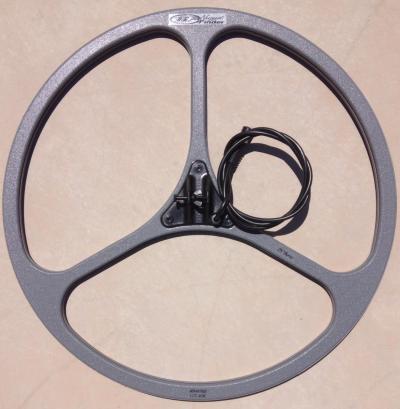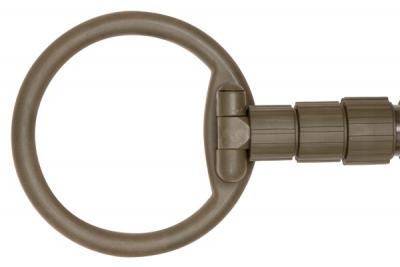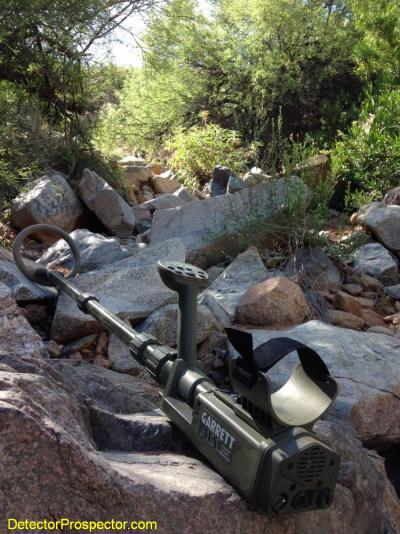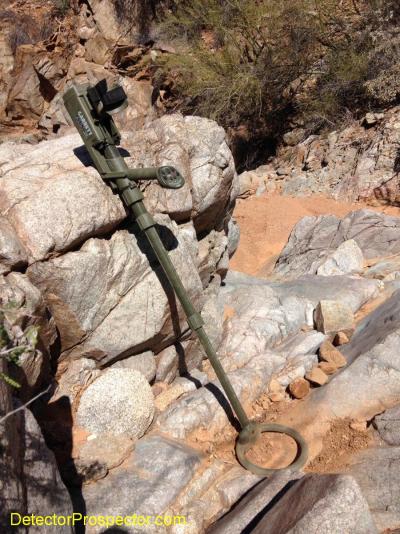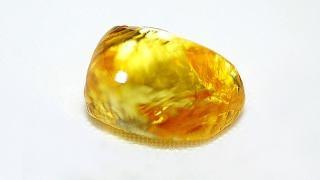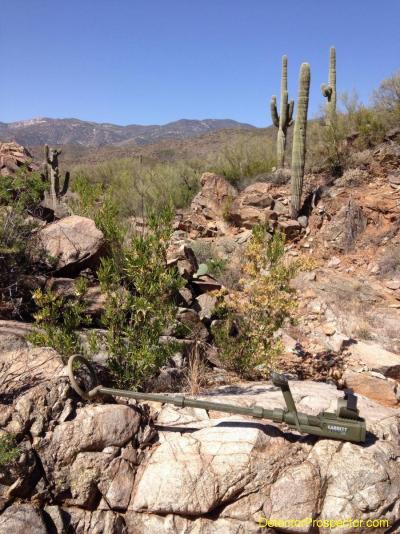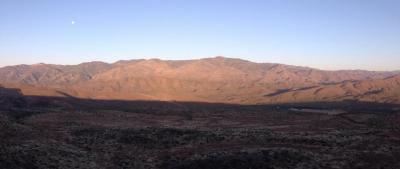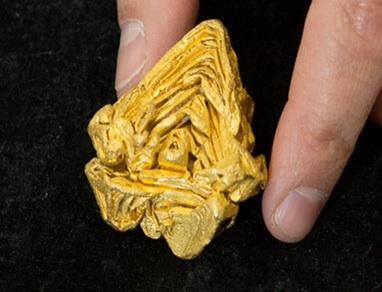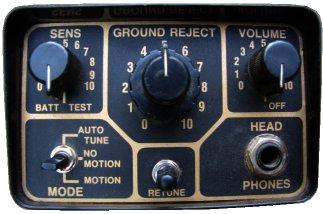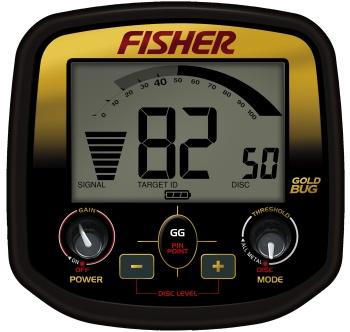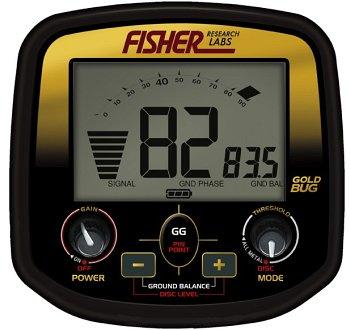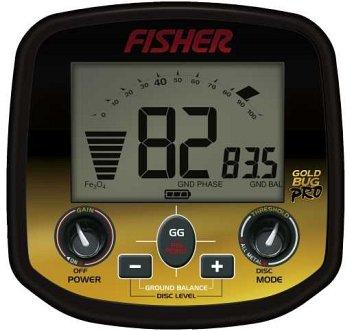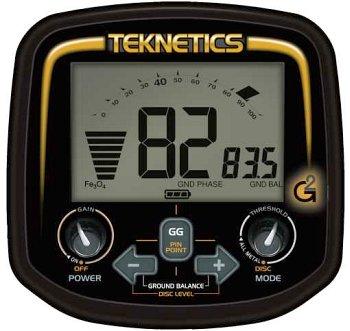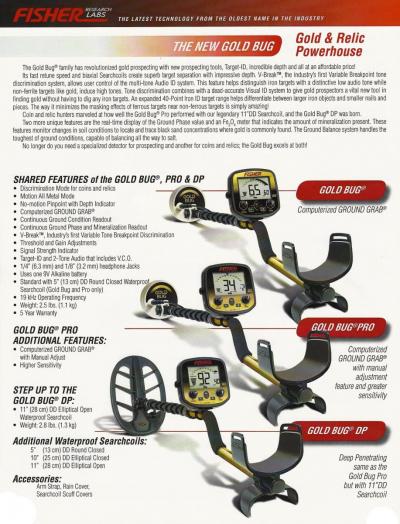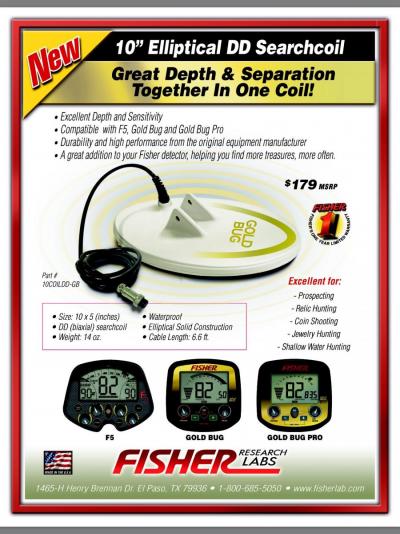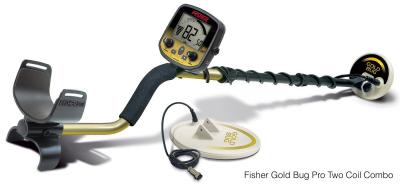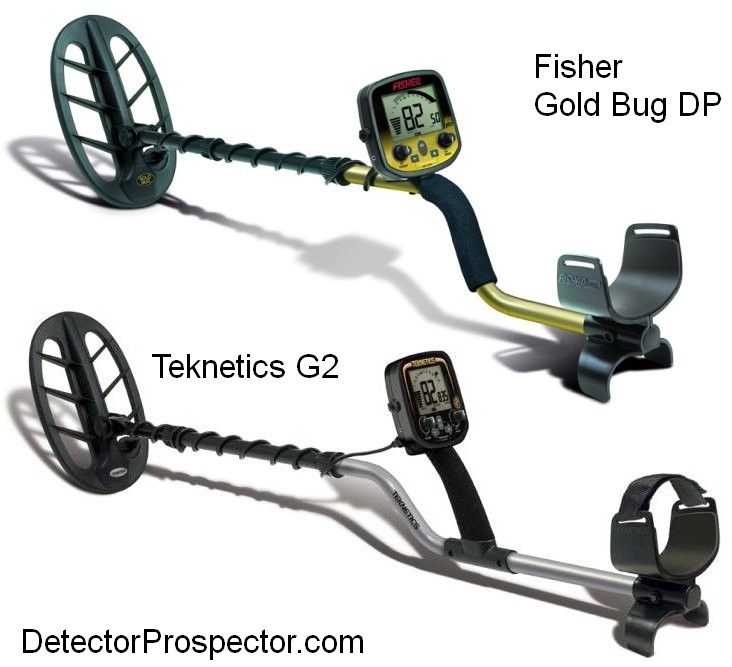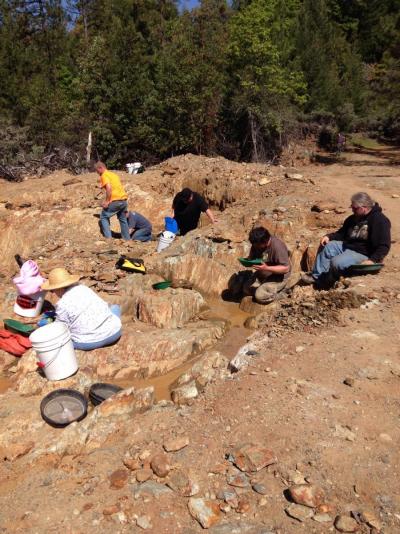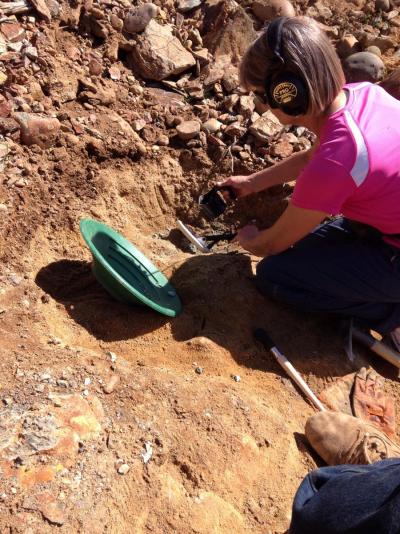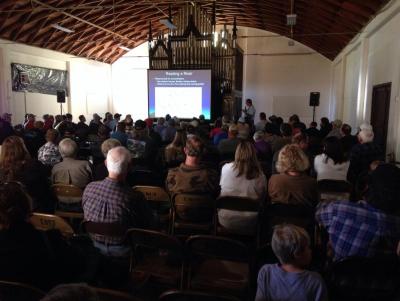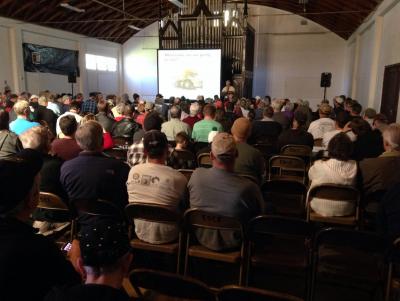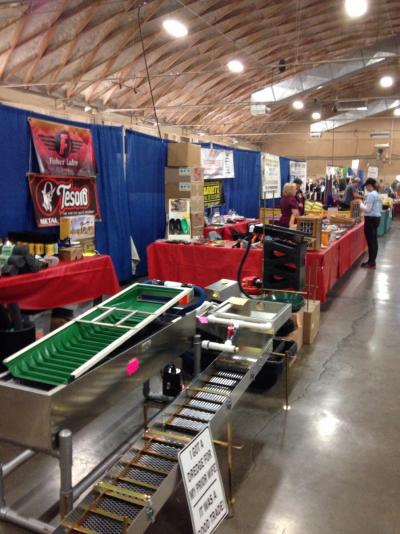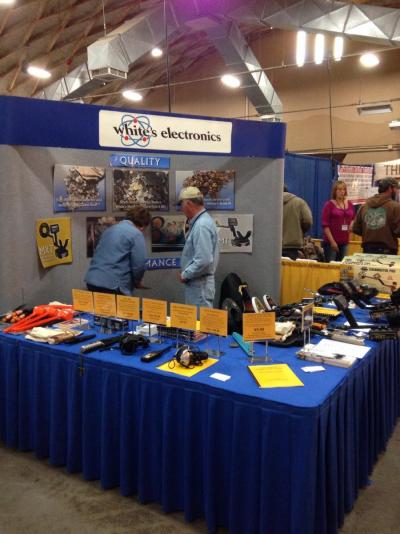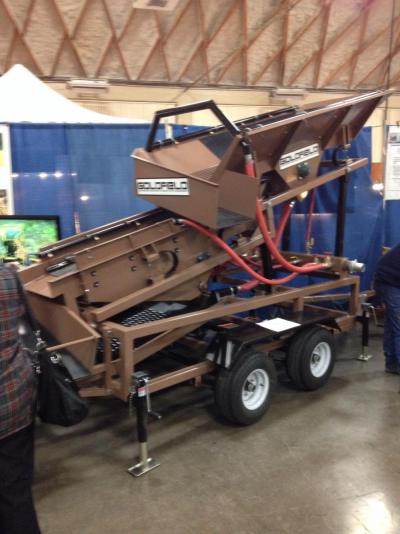-
Posts
19,805 -
Joined
Content Type
Forums
Detector Prospector Home
Detector Database
Downloads
Everything posted by Steve Herschbach
-

New White's Bullseye Trx Pinpointer
Steve Herschbach replied to Steve Herschbach's topic in White's Metal Detectors
The White's TRX has been getting rave reviews, especially in Australia. http://golddetecting.4umer.net/t18030-whites-pinpointers However, it appears the lost pinpointer alarm function was not activated in the first run of the units and some are being returned for updates. As usual these days it looks like waiting a bit before getting the latest and greatest is a good idea. I saw a TRX demonstrated at the ICMJ Mining Summit and it was quite impressive, but I have yet to lay hands on one myself. Hopefully I will get one soon but supplies have been very limited. -
Well, the latest information indicates the F19 will have a Manufacturers Suggested Retail a price of $899 and will be discounted to $799, so $150 more than a Gold Bug Pro at $649 discounted. The model will sport a true threshold based all metal mode similar to that on the Gold Bug Pro - see the right knob in the photo below. It comes standard with my preferred coil, the 5" x 10" DD coil. The only way to get that same coil right now on the Gold Bug Pro is as part of a two coil package for $749 though that could change. It uses a single 9V battery just like the Gold Bug Pro. The bottom line is you really do not need the extra features for nugget detecting. But if you find them at all desirable it is looking like the F19 will be every bit as good as a a Gold Bug Pro for nugget detecting. I will get one ASAP and confirm if that is indeed the case but looks like June availability at earliest.
-

Talked Myself Into a 25" Nugget Finder Coil
Steve Herschbach replied to Steve Herschbach's topic in Minelab Metal Detectors
Thanks for the tip Nohave. I really only have one speed using a coil that size - very slow! I picked up the coil yesterday from good friend and dealer Rob Allison while in Phoenix. -
All the nugget hunting I have done with the Garrett ATX so far was done with the standard 10" x 12" DD coil that comes with the unit. That coil is a very good coil but as my story at http://www.detectorprospector.com/steves-mining-journal/gold-nugget-detecting-with-garrett-atx.htm illustrates it has a couple quirks. The best sensitivity to small gold is in the inner coil area so it is hard to get the hottest portion of the coil close to objects like rocks or stumps. But the main problem is the DD coil is prone to false signals when knocked, making it tiresome to manipulate in rough ground. I hoped the 8" mono might help with these issues. ATX™ 8 inch Mono Searchcoil PN: 2234000 So I put in quite a few hours with the 8" mono in some rough terrain. I was not so lucky as to find any gold but recovered a handful of small ferrous targets, mostly short bits of wire and portions of nails. All pretty small stuff wedged in crevices in the bedrock wash locations I hunted. I also recovered quite a few non-ferrous targets, mostly bullets and some brass rivets. Some of the lead bits were quite small and overall I was very happy with the depth and sensitivity I was seeing. The locations I hunted were not prime gold areas but gold is present and the number of non-ferrous targets recovered proved the places were not completely hunted out yet. The 8" mono proved just as prone to false signals when knocked as the stock DD coil. The good news is it is lighter and the machine balances better with it on so it is less strain on the arm working the coil effectively for long hours. I do not want to overstate this issue with the coil falsing when knocked because I can hunt effectively with an ATX. But it is an issue that needs to be noted. Well designed detector and coil combinations do not suffer from this flaw and it adds extra effort to the hunt being sure to manipulate the coil in a fashion that does not lead to constant false signals. I much prefer coils I can put anywhere I please in any way I please without a false signal being generated. I cannot imagine how the epoxy filled coils can be the source of the issue so I presume it is the cable that generates the signals when moved in the course of a coil impact. Since the coil cable is inside the rod assembly there is not much I can do to experiment with that theory. If the cable was external to the rod perhaps strapping it more firmly in place would help. The 8" mono does have good external edge sensitivity to small items and the coil does work better in rough terrain. You can get the sweet spot closer to obstructions and the edge of the coil can be worked down into crevices. Quite a few of the targets I recovered were in bedrock crevices and sounded directly on the edge of the coil. One big factor with the 8" mono is that the ATX iron discrimination check will not work with it. If you push the button to engage the check you get a repeating tone that tells you the feature is not in effect. The iron check is a nice feature and this alone may deter someone from wanting to use the mono coil. However, I tend towards digging all targets myself so this did not bother me and in fact I am ok with the temptation being removed entirely. Personally I just do not trust discrimination systems much. Overall I prefer the 8" mono operating characteristics and for uneven, rough terrain it is my preferred coil. I also much preferred it for in water use as outlined at http://www.detectorprospector.com/forum/topic/102-garrett-atx-review-beach-detecting-in-hawaii/ For flatter open terrain I would stick with the stock coil. The main problem however is that it is very hard to justify the 8" mono to most people given the fact that when you buy it you are forced to buy an entire telescoping rod assembly also. This drives the price of a decent coil option up to the point where it is a significant fraction of the original purchase price of an ATX. With a manufacturer suggested list price of $529.95 discounted to $450 this coil unfortunately will probably go underutilized by ATX owners.
-

Talked Myself Into a 25" Nugget Finder Coil
Steve Herschbach replied to Steve Herschbach's topic in Minelab Metal Detectors
Hi Nohave, Thanks, but I have already obtained a new 25" coil. -
Fourteen year old Tana Clymer found the 3.85 carat yellow diamond last October at a crater of the Diamonds park in Arkansas. Crater of the Diamonds is the only diamond-producing site in the world that's open to the public, according to the park. Tara plans on using the proceeds from the sale of the jellybean size diamond to help pay for college. http://www.weather.com/tv/tvshows/prospectors/teen-sells-diamond-found-arkansas-20140411 AP Photo
-

Sunrise On The Bradshaws
Steve Herschbach replied to Steve Herschbach's topic in Detector Prospector Forum
My expectations are low since I am on open BLM land. But you never know. So far the usual junk. I mainly wanted to give the ATX 8" mono coil a spin. -
Drove from Reno almost to Phoenix last night. Up before sunrise to see the sun rise on the Bradshaw Mountains this morning. Now off to beep for a little gold. Well, off to beep anyway. Gold optional!
-
In theory on the Gold Bugs a numeric reading of 40 and higher is non-ferrous. The reality unfortunately is small gold or deep gold in highly iron mineralized ground can have the numbers skewed much lower. The detector is seeing the iron content of the ground along with the gold signal and the iron overwhelms the gold signal. Gold can read at least as low as 30 and possibly even lower. The bigger the nugget and the purer the gold, the higher the reading. I have seen very large multi-ounce nuggets read like an aluminum can. So your readings are not unusual at all.
-
Nice picture of a nugget found on the club claims at http://www.dailyinterlake.com/news/local_montana/article_8b18523e-018e-54c0-add0-7983efa22624.html?mode=jqm Huge amount of geological and historical information on Libby Creek and mines in the area at http://www.deq.mt.gov/abandonedmines/linkdocs/108tech.mcpx
-
LOS ALAMOS, N.M., April 7, 2014—When geologist John Rakovan needed better tools to investigate whether a dazzling 217.78-gram piece of gold was in fact the world’s largest single-crystal specimen—a distinguishing factor that would not only drastically increase its market value but also provide a unique research opportunity—he traveled to Los Alamos National Laboratory’s Lujan Neutron Scattering Center to peer deep inside the mineral using neutron diffractometry. Neutrons, different from other probes such as X-rays and electrons, are able to penetrate many centimeters deep into most materials. More at http://www.lanl.gov/newsroom/news-releases/2014/April/04.07-single-crystal-of-gold-verified.php
-
I think the GB/G2 units are far more sophisticated under the hood than the simple control set implies. We know, for instance, that the detector is constantly tracking ground conditions. I see things in the field nugget detecting that the detector may be using that tracking information to modify some software parameters even though we are told the ground balance is fixed wherever it is set. Hot rocks bang on a first pass and mellow immediately when returned to and it seems like more than just the autotune is involved. The GBP has reeducated me into the dangers of discrimination. I run in all metal but since the meter still operates in disc mode check the id before digging. Yet in most cases I am digging everything regardless. The number of small non-ferrous items or larger non-ferrous items at depth that read ferrous in bad ground is truly frightening. Most detectors I am either in all metal mode so just digging everything. Or in disc mode with bare iron reject set, digging all non-ferrous. So I do not see precisely what I am missing in disc mode. The GBP makes it painfully obvious I have walked away from vast numbers of good targets over the years, even using the most minimal iron disc settings possible. The flip side positive lesson is that huge numbers of good items remain for those of use willing to dig it all. Forget depth, accurate ferrous versus non-ferrous discrimination is the magic bullet we need and are still waiting for. Or maybe not. Maybe it is better people use disc and leave me stuff to find. The perfect detector would clean areas out rapidly so we best be careful what we wish for.
-
Hi Keith, According to the manual: "Ground Grab (GG) - This feature is not available in Discrimination mode. Your best results will be achieved by first performing the GG procedure in All-Metal mode. The ground balance setting achieved using GG will carry over into this mode." I assumed it did but never put it to the test. So I did just now with my Gold Bug Pro (version 3). I have three rocks; one GBs at 89, one at 63, and one at 43. Bottom line is by balancing these rocks and going to disc mode and testing them, along with GB set at 0 and at 999, I proved ground balance does indeed carry over to disc mode. The 89 rock in particular screeched in disc mode when GB manually set very low. However, the rocks would almost never give a target id in disc mode, just audio reports, and not very good ones. However, the disc mode is very forgiving and it really took huge unrealistic GB offsets to see this in action. I can see why you would not think it is doing anything because with normal adjustments there is no obvious effect in air tests. I suspect with in ground tests in very bad ground it would be more obvious. Something I discovered by accident also. Set GB at 999 and go the full gain disc. I have EMI static simulating a threshold. Now set GB at zero and go to high gain disc. My EMI totally goes away. GB at 50 minimal EMI. In my location at least, the lower the GB setting in all metal, the less EMI in disc mode. Could software be boosting gain in disc mode as the ground balance setting increases? Hmmm. Just a quickie test but informative. Thanks for asking!
-
Fisher Research originally released the 19 kHz Gold Bug model about 1987. It was a real breakthrough design at the time with a compact control box, S-rod, and elliptical coils. The detector is a good unit but is strictly all metal (no discrimination). It has no LCD readout and looks much like the current 71 kHz Gold Bug 2 but has a white lower rod and a black control panel face. Some people are confusing this old model with the new so be aware of this when looking at used detectors. The 19 kHz coils for the old Gold Bug will not work on newer versions of the Gold Bug below. The 71 kHz Gold Bug 2 is a totally different detector than the various 19 kHz models described below. Around 2010 a number of new Gold Bug models were released by Fisher. First came the Gold Bug in 2009. Then came the Gold Bug SE (Special Edition) which added manual ground balance at a bargain introductory price. The SE with minor tweaks later became the Gold Bug Pro at a higher price. So now we have two basic versions, the Gold Bug and the Gold Bug Pro. They differ from the old 1987 model by having an LCD readout. The standard version of either detector comes with a 5" round coil. There is a Gold Bug DP (Deep Penetrating) which is nothing more than a Gold Bug Pro with an 11" x 7" DD elliptical coil instead of a 5" round DD coil. The only difference listed by Fisher between the Gold Bug and the Gold Bug Pro is that the Gold Bug Pro has a manual adjustment option for the ground balance and also offers "higher sensitivity". Both models use a "Ground Grab" button as a simple ground balance method that is quite effective. The Gold Bug Pro allows you to also manually adjust the ground balance setting up or down. The manual adjustment can be used in conjunction with or separately from the Ground Grab button. The big question is the "higher sensitivity" claim. There are two possibilities here. First, that the Gold Bug Pro actually allows for higher gain or sensitivity levels. However, I was in marketing too long and have a more jaded thought. Manual ground balance allows for a higher degree of control that if used properly can get you more sensitivity. There is a very distinct possibility the higher sensitivity claim follows directly from the ability to manually ground balance the Gold Bug Pro. This could be tested with both units set side by side with identical ground balance settings and max gain. If the Gold Bug Pro is inherently more sensitive an air test should show it. I have not had the chance to do this my self but if somebody wants to there you go. ads by Amazon... My opinion? I believe the Gold Bug and the Gold Bug Pro if outfitted with the same coil are basically the same detector. The only real difference is the manual ground balance option on the Gold Bug Pro. Do you need it? Not really, and especially when you consider that for $499 vs $649 that is probably all you are getting. The Ground Grab function is remarkably effective and would suit most people just fine. I personally do like manual ground balance and so for me spending the extra money to get it is a non-issue. I do as a rule tell people that if cost is not an issue get the Gold Bug Pro. It is far more popular and would be easier to resell. But in all honesty I think the Basic Gold Bug is the real bang-for-the-buck unit. There is nothing else close to it at the $499 price point that offers full LCD readout target discrimination while in full power all metal prospect mode. I should note that First Texas owns both Fisher and Teknetics. The Fisher Gold Bug DP (Gold Bug Pro with 11" coil) is marketed by Teknetics as the G2. The Fisher Gold Bug DP goes for $699 and the Teknetics G2 is $749. The $50 extra gets you a pistol grip rod instead of the Gold Bug S-rod and an arm strap. Nice gray paint scheme also. Really boils down to pistol grip vs S-rod, purely a personal preference thing. I use the 5" x 10" elliptical myself and consider it to be the best all around coil for the Gold Bug. However, right now you have to get it as an accessory or as part of a two coil package. Fisher would be doing us a service to release the Gold Bug with this coil as standard on the unit. My Gold Bug 2 is slightly better on the tiniest of gold but the Gold Bug Pro easily outperforms the Gold Bug 2 on larger nuggets at depth. For all around nugget detecting the Gold Bug or Gold Bug Pro (and G2) have a better balance of both small gold and large gold capability than the Gold Bug 2. Fisher Gold Bug Pro & Teknetics G2 Detailed Comparison To recap first came the original 1987 era Gold Bug with knobs and switches: 1987 era analog Fisher Gold Bug Then in 2009 we got the new Gold Bug: Fisher digital Gold Bug Followed quickly and briefly by the Gold Bug SE. Note how the plus and minus buttons now have dual functions, both Disc and Ground Balance, compared to the basic Gold Bug above: Fisher Gold Bug SE The Gold Bug SE was basically the prototype for the Gold Bug Pro, which got a new faceplate decal and a higher price: Fisher Gold Bug Pro And finally, the Gold Bug Pro was also marketed under the Teknetics line as the G2 with a different rod/handle assembly: Teknetics G2 Gold Bug Pro DP compared to Teknetics G2: Click on images below for larger versions.....
-

2014 ICMJ Mining Summit Daily Photo Album
Steve Herschbach replied to Steve Herschbach's topic in Detector Prospector Forum
Great to get the chance to chat with you guys but it does seem the show makes it real hard to do more than chat. I must of talked to a couple hundred people so it is just bounce from one person to another all day. Overall I think the show was very successful and an event to look forward to in 2016. -

2014 ICMJ Mining Summit Daily Photo Album
Steve Herschbach replied to Steve Herschbach's topic in Detector Prospector Forum
-
Sheesh, seems like we will never meet Ray. Saw Steve and Dee and they mentioned the outing but looks like I will be in Phoenix then. At this point I am booked up through August so maybe this fall. I wish you all some gold though and know you will have a good time. Good on you for putting this together.
-

2014 ICMJ Mining Summit Daily Photo Album
Steve Herschbach replied to Steve Herschbach's topic in Detector Prospector Forum
Busy day, same as yesterday so no photos. My speaking gig went well I think. Back to private mining area tomorrow so will post a few more photos from there. -

2014 ICMJ Mining Summit Daily Photo Album
Steve Herschbach replied to Steve Herschbach's topic in Detector Prospector Forum
You going to be around tomorrow Ray? My speaking gig is at 12:30. -

2014 ICMJ Mining Summit Daily Photo Album
Steve Herschbach replied to Steve Herschbach's topic in Detector Prospector Forum
-

2014 ICMJ Mining Summit Daily Photo Album
Steve Herschbach replied to Steve Herschbach's topic in Detector Prospector Forum
-

2014 ICMJ Mining Summit Daily Photo Album
Steve Herschbach replied to Steve Herschbach's topic in Detector Prospector Forum

